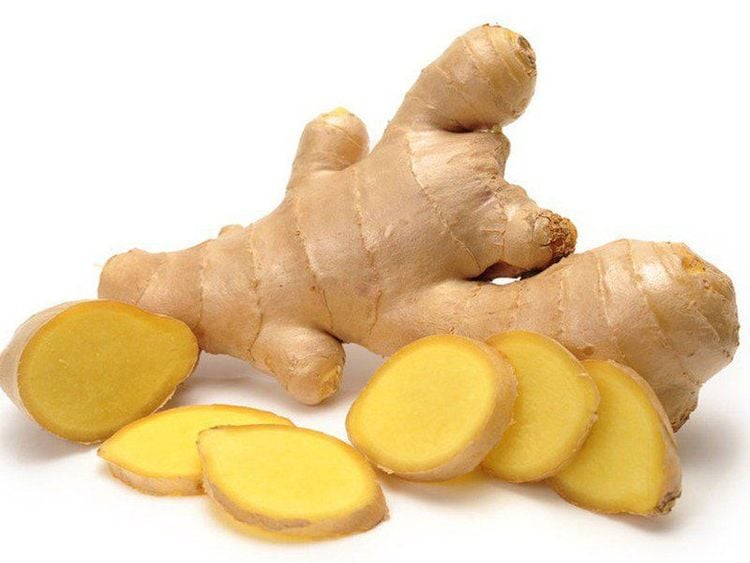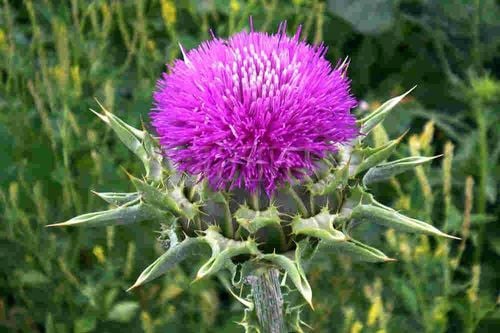This is an automatically translated article.
Posted by Doctor Mai Vien Phuong - Department of Medical Examination & Internal Medicine - Vinmec Central Park International General Hospital
Medicinal plants have been used by all cultures throughout history and continue to be an integral part of modern civilization. From generation to generation, ethnic groups around the world have used a variety of plants to treat various gastrointestinal problems.
1. Medicinal plants for digestive disorders
Various medicinal plants such as: Chamomile, anise, mint, licorice...usually available as teas or capsules have long been used to treat indigestion.
One study compared the effectiveness of ginger and artichoke supplements versus a placebo for treating indigestion. The design included a 4-week prospective, double-blind, randomized, placebo-controlled, multicenter group format comparing herbal versus placebo combinations. A dose of 2 tablets per day was given before meals (lunch and dinner) to 126 people with dyspepsia. The study found that after 2 weeks, only the herbal treatment group significantly reduced symptoms of stomach discomfort including nausea, bloating, epigastric pain and bloating. The researchers concluded that the herbal combination of ginger and artichoke leaf extract appeared safe and effective for treating indigestion.
Because medicinal plants often contain hundreds of active ingredients, they can be applied to different ailments. For example, cinnamon (Cinnamomum verum) can be used to both fight flatulence and lower blood sugar.
2. Medicinal plants for nausea and vomiting
Some medicinal plants can help relieve nausea and vomiting caused by different conditions such as motion sickness, morning sickness.... One of the most used plants in Traditional Medicine to combat sadness vomiting and regurgitation is ginger (Zingiber officinalis- Zingiberaceae).
The antiemetic effect of ginger is still not fully understood. However, it appears that the main bioactive components of this plant act directly on the gut via the peripheral nervous system and not through the central nervous system (CNS). The phytochemicals present in ginger may both provide anti-inflammatory effects and inhibit platelet aggregation.
Ginger can be taken as a tea or in capsules. In Europe, this plant is widely used to treat nausea and vomiting during the first 3 months of pregnancy. Ginger extract contains gingerols and shogaols, which exert activity on cholinergic and serotonergic receptors. A systematic review has highlighted the effectiveness of ginger in preventing and treating nausea/vomiting of various etiologies. The review focused on nausea and vomiting caused by pregnancy or chemotherapy. The authors hypothesized that ginger extracts had an important role in treating nausea and vomiting of various etiologies, with the fewest side effects. For this reason, the authors conclude, ginger preparations could be a potential alternative to a variety of traditional kinetics products such as domperidone, levosulpiride, metoclopramide or antiemetic products such as phenotiazines and 5HT3 antagonists.

3. Medicinal plants for diarrhea
Traditionally, plants rich in tannins have always been used to treat diarrhea due to their astringent properties. In particular, many medicinal plants may also contain additional phytochemicals, which may be helpful in reducing symptoms.
Guava leaves are used throughout the tropical United States to treat diarrhea in children and adults. This plant contains tannins, quercetin and is a good source of Vitamin C. A review of pharmacological experiments with guava showed that guava's diverse bioactivities include phenolic compounds, flavonoids, carotenoids, terpenoids and triterpenes. In particular, guava leaf and fruit extracts also have antispasmodic and antibacterial properties, which are useful for treating diarrhea (including infant rotavirus enteritis) and dysentery. .
4. Medicinal plants for flatulence
In herbal medicine, the term carminative refers to a plant with active ingredients that help relieve bloating and abdominal pain. This property is often due to volatile oils, as well as other phytochemicals produced by the plant.
One of the herbal products commonly used to treat flatulence is star anise. However, the retrograde use of flatulence in children under 6 years of age should only be done under specialist supervision, due to the potential for neurotoxic side effects.
In short, many peoples of the world have used plants to treat diseases. According to the indigenous view of the medicinal properties of herbs, certain plants were used to treat various ailments, due to their distinctive taste or aroma. For example, healing herbs with astringent properties are used specifically to treat diarrhea and dysentery, while bitter and aromatic herbs are used to treat pain and sugar spasms. Digest.
Today, Modern Medicine has developed extremely, everyone should go directly to the hospital to be examined by a doctor, thereby determining the cause and having a specific treatment plan. Regular health check-ups are also very practical to protect your own health.
Please dial HOTLINE for more information or register for an appointment HERE. Download MyVinmec app to make appointments faster and to manage your bookings easily.
ReferencesArmando Enrique González-Stuart et al. Medicinal Plants for Digestive Disorders What Gastroenterologist Needs to Know. Gastrointestinal motility and functional bowel disorders, series
11. September 2015 • Volume XXXIX, Issue 9 Bone K, Mills S. Phytotherapy 2nd ed. London: Elsevier; 2012. Wynn S, Bougere, B. Veterinary Herbal Medicine: New York; Elsevier; 2007.














